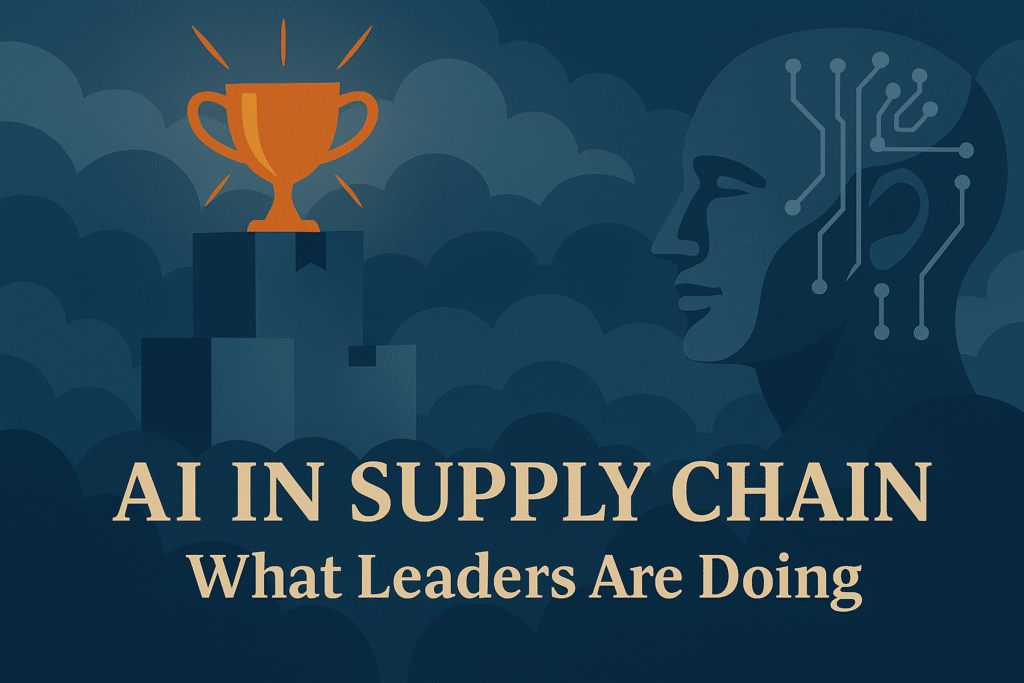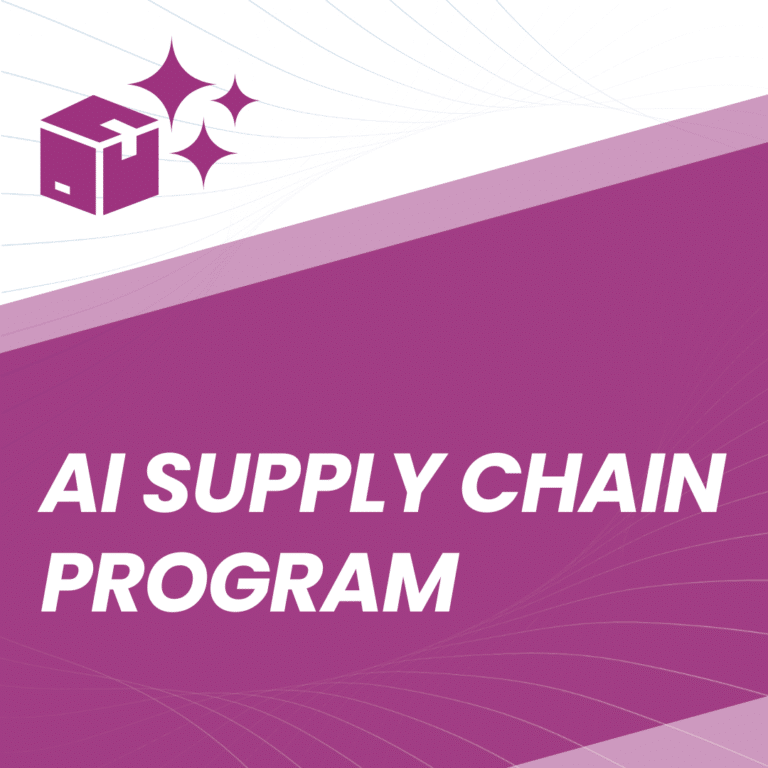
When we asked 1,000 supply chain professionals what they needed most to move forward with Artificial Intelligence, one answer topped the list:
“Show me real Supply Chain artificial intelligence use cases that work.” (download white paper here)
Here are 3 concrete examples—one success, one in progress, and one lesson learned.
SUCCESS – Nestlé Artificial Intelligence Use Case Cuts Edible Food Waste
Nestlé UK & Ireland, alongside industry partners and supported by Google Cloud, piloted an ambitious project to address food waste at scale. By leveraging machine learning to track surplus products in real time, the factory was able to reroute consumable items to charities instead of discarding them. This was not only a sustainability initiative but also a supply chain optimization exercise. Coverage by The Guardian and ESM Magazine highlights that the trials could prevent up to 1,400 tonnes of CO₂ emissions and save £14 million if scaled across sites.
Results:
- 87% reduction in edible food waste during a two-week trial.
- Potential to redistribute up to 700 tonnes of surplus food (~1.5 million meals).
- Avoid ~1,400 tonnes of CO₂ and save ~£14M if scaled across sites.
What to copy:
- Start with a narrow, high-yield bottleneck (surplus edible waste).
- Instrument the line; create real-time signals; close the loop with operations + NGOs/logistics.
- Track value with a single scoreboard (meals, CO₂, £ saved).
Technology: Analytical AI on Google Cloud (BigQuery, Vertex AI)
Complexity: Medium
IN PROGRESS – Walmart’s Distribution Center Digital Twins
Walmart is advancing one of the largest retail applications of digital twin technology. By creating AI-powered replicas of stores and distribution centers, Walmart can test layouts, optimize workforce allocation, and predict equipment failures before they occur. The initiative reflects a shift from reactive problem-solving to proactive optimization across logistics and retail operations. As explained by Walmart Corporate News and Willow Inc., Walmart has already flagged hundreds of potential failures in trial sites and is building a repeatable playbook for scaling.
What it looks like in practice:
- Technicians receive predictive maintenance alerts (e.g., a fridge or conveyor is likely to fail).
- Teams simulate merchandising/space changes before moving a shelf.
- Increasingly tied to routing, workforce and replenishment decisions.
What to copy:
- Build a sandbox twin for one site; prove one or two outcomes (downtime avoided, labor hours saved).
- Connect to a few live data feeds (IoT, WMS, POS).
- Expand to similar formats only after a repeatable playbook emerges.
Technology: Predictive + Analytical AI on Willow digital-twin platform
Complexity: High
LESSONS LEARNED – Johnson & Johnson’s GenAI Pivot
Johnson & Johnson initially launched nearly 900 generative AI pilots across its global operations, but only a fraction produced meaningful impact. The company learned that success required sharper focus and governance aligned with business functions. By narrowing to high-value domains like supply chain management, drug discovery, and employee support tools, J&J ensured AI delivered measurable outcomes. Reports by The Wall Street Journal and PYMNTS describe how the pivot allowed J&J to prioritize projects delivering 80% of the value while cutting redundant efforts.
What they changed:
- Moved from “a thousand pilots” to a focused portfolio on high-value domains (including supply chain).
- Shifted governance into the functions best placed to judge value (commercial, supply chain, R&D).
- Replaced use cases where classic analytics/automation outperformed GenAI.
What to copy:
- Treat GenAI as a subset of your analytics toolkit; only use it where it wins.
- Install a value gate: clear target metric, time-boxed milestones, and a kill/scale decision.
Technology: Generative AI on internal copilots Complexity: Simple
Key Takeaway
Supply chain leaders are learning that AI adoption is less about experimenting everywhere and more about proving value in the right places. Start small, focus on high-yield areas, and scale only once a repeatable playbook is clear.
Sources
- Nestlé UK & Ireland: The Guardian, ESM Magazine
- Walmart Digital Twins: Walmart Corporate News, Willow Inc.
- Johnson & Johnson GenAI Pivot: The Wall Street Journal, PYMNTS
What is a successful Artificial Intelligence use case in supply chains?
Nestlé reduced edible food waste by 87% in a two-week trial using machine learning on Google Cloud, with potential to save £14M and avoid 1,400 tonnes of CO₂ if scaled.
How is Walmart using AI with digital twins?
Walmart is creating AI-powered replicas of stores and DCs to test layouts, predict equipment failures, and optimize operations. Early pilots flagged hundreds of potential failures.
What lesson did Johnson & Johnson learn with GenAI?
J&J found that 900 pilots diluted value. By narrowing to high-value domains and aligning governance, they achieved 80% of value from fewer, focused projects.
What common patterns can leaders copy?
Start small, prove value with one or two outcomes, connect to live data, use clear metrics, and scale only once a repeatable playbook exists.
What is the key takeaway from these cases?
AI adoption succeeds when leaders focus on high-yield use cases, avoid pilot overload, and treat AI as a strategic tool with clear governance.


